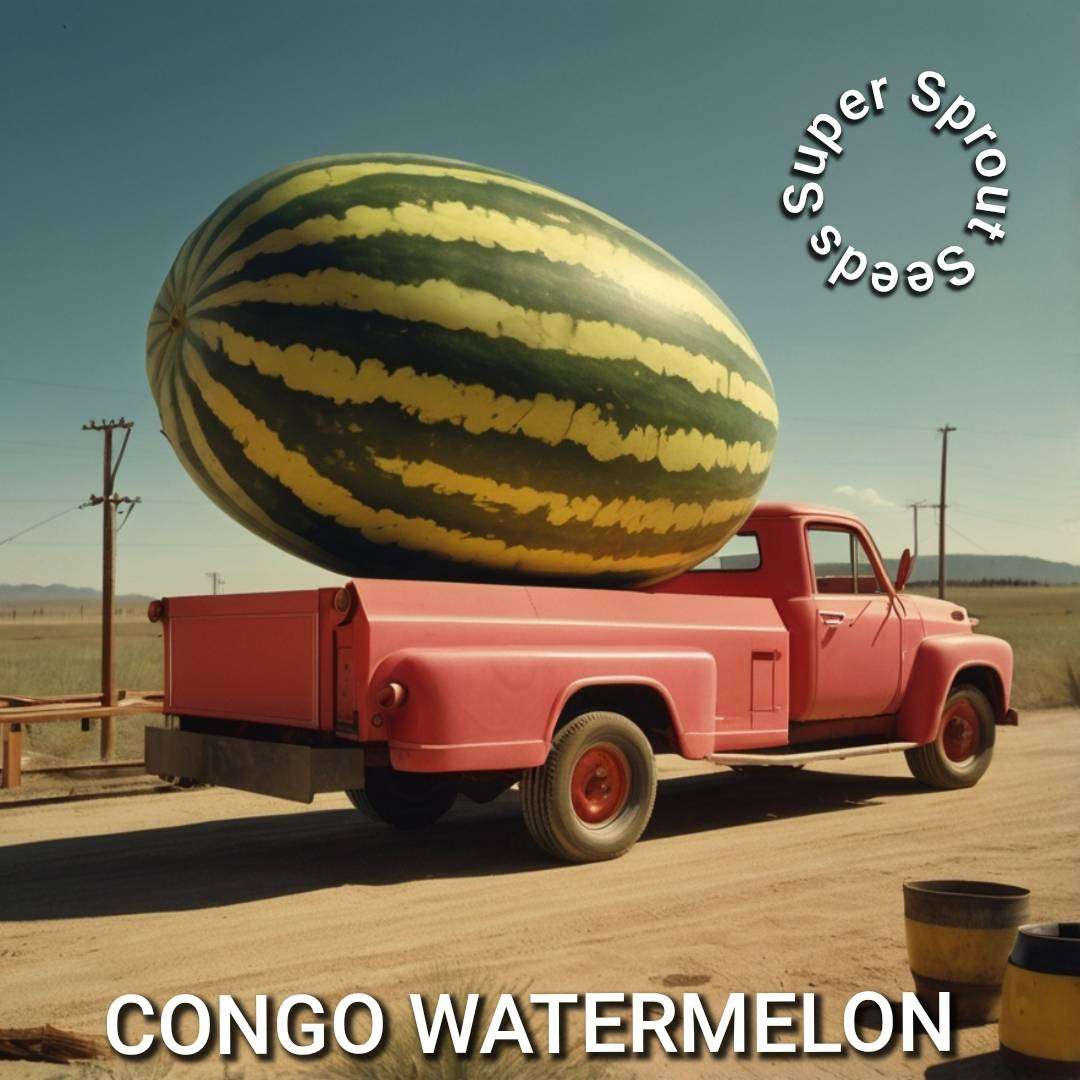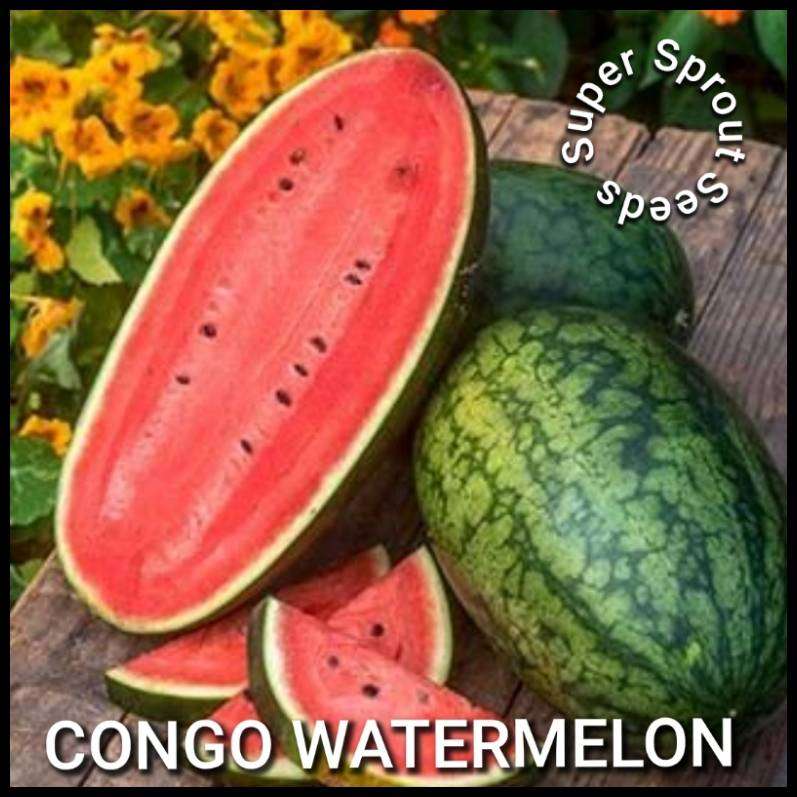The 'Congo' is a popular heirloom watermelon variety known for its large size, thick rind, and high sugar content. An All-America Selections winner in 1950, it was named to symbolize the continent of Africa, where watermelons originated. This variety is well-regarded by both home gardeners and commercial growers for its durability and excellent flavor.
Characteristics
Fruit size: Congo watermelons typically produce large, cylindrical fruits, often weighing between 30 and 40 pounds (14 to 23 kg). Exceptionally large specimens can reach up to 50 pounds.
Flavor and flesh: The flesh is firm, medium-red, and very sweet, with a high sugar content of around 9.5%.
Appearance: The rind is thick and tough, with a medium-green color and dark-green stripes. This thick rind provides resistance to bruising, making the melon a good candidate for shipping.
Disease resistance: The Congo variety has been bred to be resistant to anthracnose, a common fungal disease.
Growing information
Type: The Congo watermelon is an open-pollinated heirloom variety, which means its seeds can be saved and replanted to produce the same type of melon year after year.
Growing conditions: It thrives in full sun and rich, loose, well-drained soil with a pH of 6.0 to 6.8.
Planting: Seeds can be sown directly outdoors after the soil temperature has warmed to at least 70°F (about 21°C).
Harvesting: The fruit is typically ready for harvest in about 85 to 95 days. Indicators of ripeness include a dull thump sound when tapped, a yellowish color on the underside of the melon, and a dried-up tendril closest to the fruit.





